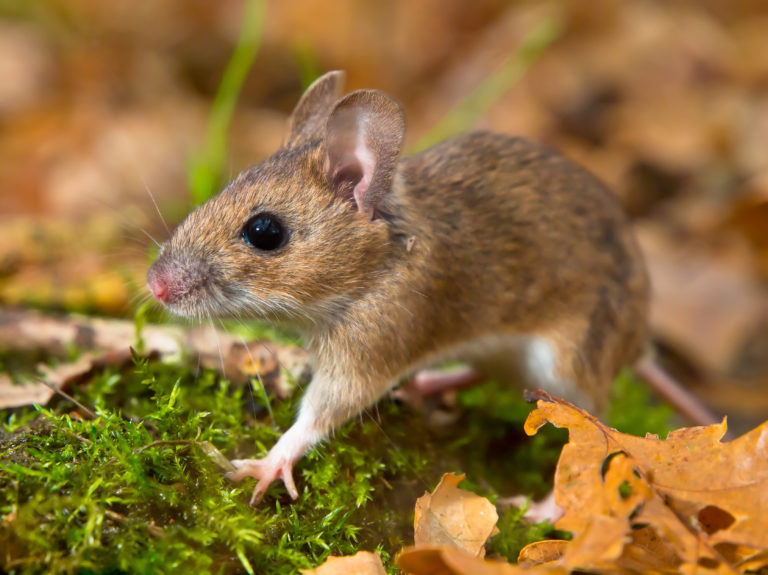Bigger, faster, stronger
It is no surprise that the yellow necked mouse, which is very active at night and not normally found in areas where humans live, is not at all well-known. Until this century, this rodent was not differentiated from its sibling species, the wood mouse, which is known to most people.
What does the yellow necked mouse look like?
At first glance, both species look confusingly similar. Both have features which are typical of all the species of the mouse family (muridae), such as, large eyes and ears, strong hind legs which are suited to jumping and a long tail which helps them balance. The back is a strong ochre to maroon colour and the underside is whitish-grey. In contrast to the wood mouse, the yellow necked mouse has a distinctive band of yellow fur around its neck, large, paper bag-like ears and highly contrasted fur. Overall, it is bigger than the wood mouse and a fully-grown yellow necked mouse can reach a weight equal to half a bar of chocolate.
Not all mice are the same
If you have ever seen a wood mouse and a yellow necked mouse side by side, you will know that the yellow necked mouse is more dynamic an assertive in its behaviour than the wood mouse. The reason behind this is the difference in lifestyle of the two species. Both of these rodents live in forests and woodlands, but the wood mouse is less fussy and inhabits almost all kinds of environment, whereas, the yellow necked mouse typically lives in very leafy wooded areas and has very stringent requirements for its habit and surroundings. It mostly lives in areas with a high density of beech and oak trees. The wood mouse will dig itself a burrow with no trouble, whereas, the yellow necked mouse is far too lazy to dig and relies on readily available holes under tree roots and knot holes inside tall trees.
When rearing their young, female yellow necked mice need very high energy food, such as, acorns, beech nuts and hazelnuts. If a female finds a territory which is suitable for her requirements, she will defend it fiercely from other females. Seeing as the yellow necked mouse doesn’t have many alternatives due to its high demands, it will drive away the wood mouse by being physically more dominating, even though the wood mouse is more flexible. The result is that both species can’t co-exist in the wild, instead they stay far apart.
What future for the yellow necked mouse?
In today’s cultural landscape, the yellow necked mouse is increasingly affected by the extensive destruction of the forests. Existing forests are shrinking to only a few hectares which are cut off from each other by fields, pastures and roads. Current investigations are trying to clarify how the yellow necked mouse is handling these changes and to what extent its place in western Europe is at risk.
